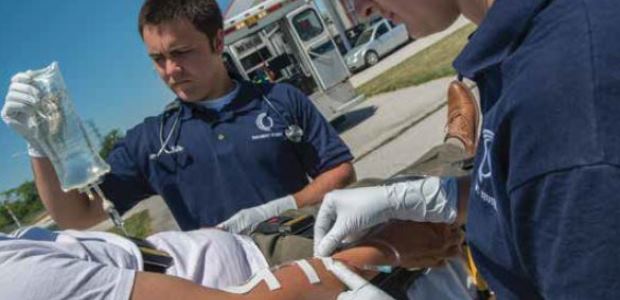
Fentanyl Risks Put Focus on Hand Protection in Many Environments
Those most likely to be exposed, such as police and fire personnel, EMTs, ER staff, and forensic lab personnel, should be transitioning to gloves that provide comprehensive protection against fentanyl.
- By Joe Kubicek
- Aug 01, 2018
The ongoing drug epidemic in the United States is getting worse by the day. Drug overdoses claimed the lives of more than 64,000 people in this country in 2016—an increase of 21 percent over 2015. Opioids were responsible for some 42,000 of those deaths and synthetic opioids, such as fentanyl, were responsible for almost half of that number. In fact, synthetic opioids are driving the extreme spike in drug fatalities. The 20,000 deaths traced to synthetic opioids in 2016 were more than double the total in 2015, and overdose deaths from synthetic opioids other than methadone have increased an average of 88 percent each year since 2013. We are losing the war on drugs, and fentanyl and other synthetic opioids are the biggest reasons why.
Fentanyl is estimated to be 50 to 100 times more powerful than heroin, and even small amounts of fentanyl can be fatal if ingested or inhaled. Simple contact with the drug can trigger adverse reactions. This means fentanyl is a real danger not just to users, but to anyone who comes in contact with it. That could include first responders, such as EMTs and police; doctors, nurses, and other emergency room staff; TSA personnel; and even hotel cleaning crews. In fact, with drug use so rampant and fentanyl use skyrocketing, these risks exist in almost all workplaces.
Wherever workers are using drugs—and it's happening everywhere—co-workers are at increased risk. It's critical that workers, including those who may be in position to administer first aid, understand the signs of an overdose and how to safely treat the victim.
When dealing with a fentanyl overdose, safely treating the victim can be a challenge. These overdoses are often ugly, with vomiting a common symptom. Someone providing emergency aid to an overdose victim may come in contact with fentanyl in those bodily fluids, and fentanyl remains potent even when mixed with gastric acid. Similarly, a co-worker and others attending to an overdose victim could pick up fentanyl residue from the victim's clothing or surroundings and run the risk of exposure or even ingestion by rubbing an eye or scratching a nose. With a drug as powerful as fentanyl, such contact poses a massive risk.
Wearing appropriate PPE is critical, and it starts with hand protection. After all, the hands are the first and primary point of contact between the victim and the person providing aid. Just as there are gloves designed for cut protection or chemical resistance, there are gloves tested and proven to provide protection against fentanyl and, importantly, against the combination of fentanyl and gastric acid. When choosing gloves to protect workers against fentanyl exposure, this is an important consideration. Other features to consider when selecting an appropriate glove include:
- Extended cuff: Contact with the victim isn't likely to be limited to the area below the wrist. Gloves with extended cuffs provide protection further up the arm.
- High quality and reliability: AQL (acceptable quality level) scores for these types of gloves range anywhere from 4.0—meaning up to 4 percent of a set of gloves could include a defect—to the current industry standard of 0.65. The lower AQL is the safer choice.
- Double dipped, dual color: Contrasting interior and exterior colors make it easier to detect breaches or to notice the presence of dangerous substances on the glove’s surface.
- Non-stick formulation: This eliminates troublesome sticking with tape and adhesives that can complicate and delay aid for the victim.
- Comfort and performance: These things matter, and various materials provide better grip and are gentler on the skin than others.
- Gastric acid protection: Again, this is critical in a fentanyl overdose situation. There are a few gloves on the market today that meet or exceed NIOSH recommendations for safety, allowing no permeation of either fentanyl or gastric acid for greater than 240 minutes. These are the only gloves proven to provide comprehensive protection in these overdose events.
Equipping and Educating Those at Risk
Fentanyl presents an entirely different danger in the American drug culture and in many workplaces today. Unlike prescription drugs, cocaine, or even heroin, the users aren't the only ones at risk. Those most likely to be exposed, such as police and fire personnel, EMTs, ER staff, and forensic lab personnel, should be transitioning to gloves that provide comprehensive protection against fentanyl. Others who may potentially be at risk should at least be educated on the risks of fentanyl exposure and have access to appropriate hand protection.
As glove manufacturers, it is our responsibility to continue to expand the options for fentanyl-resistant PPE to ensure there are solutions that meet the needs for all workers in all environments. We also must work with employers and safety personnel to ensure they understand the risks and the solutions available to help keep workers safe.
Reference
1. National Center for Health Statistics, a division of the Centers for Disease Control and Prevention
This article originally appeared in the August 2018 issue of Occupational Health & Safety.